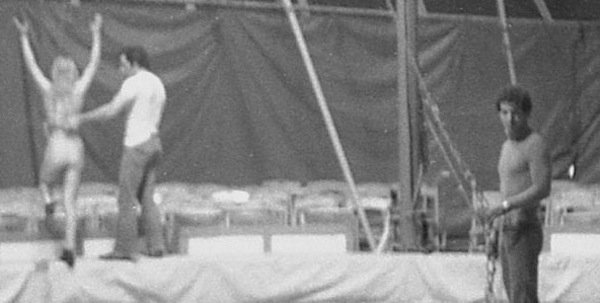
HE STILL STARES AT ME after forty years, the man holding the rope, with a look that even at this poor resolution can only be violation. And the woman with the lithe body, seemingly naked in her light-colored tights, frozen in the moment of lifting a knee and raising both arms in air, preparing for flight, for ecstasy, or for some other abandon, still has her back to me, as does the man beside her, touching, guiding, helping in some way.
They are rehearsing for a circus somewhere in a court or square in Paris—I’ve forgotten where—and the sight was something interesting, behind the scenes, which, walking by and finding an opening in the tent, I thought I should take a picture of. The woman is practicing for a leap—onto a passing horse circling the ring?—that she will perform one night alone without the help of the two men or the safety of the rope, effortlessly, flawlessly, for our breathless wonder. This must be my violation. The supports and imperfect attempts, diminishing, distracting, meaningless, must be kept hidden and not be exposed.
I was 20 and had taken a year off from college. My expectations were bright but empty, undefined yet blinding. I had no good reason for being there and no idea what I would do next. Taking pictures itself was a matter of reluctance and indecision. I didn’t want to appear the tourist so seldom carried my camera. Nor could I find convincing purpose. I had slight knowledge of the city, little insight, and superficial experience, all that my pictures could reveal. Besides, everything had been photographed many, many times before by practiced journalists and artists with a better eye. Or I could just buy postcards. Still there were days when I gathered resolve and went on random expeditions throughout the city, firing away with stuttering abandon.
Paris itself was having a rehearsal of sorts, and there were tents, scaffolds, ropes, safety nets, and helping workers everywhere. The city was in the last stages of the Malraux plan to restore its historic buildings and clean its face to the world.
Demolition of Les Halles, the centuries old market, was nearly complete, leaving a pit—le grand trou—the city debated how to fill.
Paris was the setting for Touche pas à la femme blanche!, Marco Ferreri’s farce that appropriated our history to portray the influence of power and money, the decline of native ideologies. I saw it when it came out. In the climactic scene Custer’s last stand is staged in the pit, a failed performance.
It was 1973 or 74, a stalled time without much to distinguish it. France was adjusting to its declining influence and, like the rest of the western world, was in recession. The passions of May ’68 had calmed, though there were still some protests in the streets, many against our involvement in Iran and elsewhere. Last Tango in Paris and La grande bouffe were also playing in the theaters, movies sounding contemporary ennui and excess, two terms of the stall.
My pictures themselves were subject to accident and corruption, resulting in images that were excessive or indeterminate, all boring, imperfect attempts without any hope of spectacle. I bought an inexpensive, used manual rangefinder for the trip and an exposure meter, also cheap, which I didn’t know how to use well. I shot 400 ISO black and white film so I wouldn’t need a flash for interior shots and only had the negatives developed. But also the shutter was faulty, which I didn’t discover until it eventually broke, so exposures decayed gradually, erratically. I didn’t know what I had until I got home and enlarged the negatives—grainy photographs with blurred or dim or dark images, underexposed or overexposed, with excessive sharpness or faltering contrast.
I could ascend heights to get the larger view and gain perspective
and see the vast, reasoned grid of ministries, French bureaucracy, revealed in sharp outline, and the labyrinth of narrow, old alleys released into wide boulevards, the plan of Baron Haussmann, its argument between the state and its people.
The suspicion has been leveled that Napoléon III wanted to broaden the streets to make it easier to bring in troops. Paris is an open encyclopedia of a millennium of debates between rule and chaos, between the passion for order and the order of desire. Read a history of Paris and the streets fill with shouts of protest and run with blood.
But I could only see the order of order, not its basis, nor the life it might contain, and the relationship of the present order, newly freshened, to past and present disorder or to anything else was hazy.
Fragments from the distant past were preserved but, eroded by the centuries, only revealed rough figures and uncertain structure.
Everywhere, well preserved, the buildings of faith. The structures that held them up and allowed the light to enter
faith’s entry, its sharp contrasts of dark and light, right and wrong, up and down
its followers
its overarching beliefs.
Inside, however, current practice came out only vaguely mysterious or dark, absent
or was flickering, wavering.
Faith’s monsters, though, still interest us.
I did feel safe, however, walking the streets at any hour. And I did have some exposure to all walks of life, from the derelict to working class to the upward rising, even to an established family who traced its roots back to Roman days, but in all cases I saw an economy and tentativeness I hadn’t known growing up in the U.S. More unsure were the faces of the immigrants from beyond France’s borders, lured to the city during better times with better chances of employment.
Contrast my black and white pictures with pictures of Paris now, their confident display, their bright colors. Compare them with what we see in Paris itself, the sharp, clean lines of its monuments and buildings, the polish and refinement of the restored neighborhoods. But look, too, at the neighborhoods where it may no longer be safe to walk, most on Paris’s borders, where the immigrants now mass in simmering dislocation and disaffection, where there are breaks into violence, what you see in the movie La haine. And watch Entre les murs, where cultural conflict erupts in a middle school classroom.
It’s what cities have become, spectacles for our wealth and containers for our contradictions and exclusions. The decay and violence of the latter, however, can divert us and give our lives texture. Paris has its policier Engrenages—Spiral. We have our own, The Wire, etc.
There were intimations of the future, towering abstractions, void of past reference.
La tour Super-Italie. It was the Montparnasse tower, however, just completed in the heart of Paris, that most broke the city’s low skyline and raised the most protests. Pomidou, however, looking forward, wanted his towers, and more were on the horizon.
It’s what our cities have also become, platforms for rising skyscrapers of soaring ambition, solid yet ethereal, forward gazes that look past us, past themselves, past anything we can see.
Not long ago I digitized the negatives and stored them on my computer. Processing them raised problems and questions about purpose and procedure. How could I bring out what wasn’t materially there? How could I soften total black or bring contrast to the chemically faint or still the blurred motions? Should I edit the imperfections in the negatives or the dust spots gathered from years of storage? Make adjustment for the shifts brought by electronic transfer? I had no guidelines and couldn’t decide, so left most the way they came out on my screen.
What is the relationship of my pictures to reality? There are the realities of time and place and light—when I took them, where the sun was, what was in the sky—none of which can be easily determined or precisely defined. There are also the realities of my imperfect skills and uncertain motives. Add to those the mechanical reality of my failing shutter and the reality of chemical reactions in the film and the reality of electronic translation. These are all realities, defined by human nature and natural laws. How do they add up? Which takes priority? What relationship do they have with any larger picture? Why are my pictures any more or less real than any others?
There are no answers to these questions.
There are no pictures of me standing next to anything as I never asked someone else to take my camera. Here’s me, here’s Notre Dame. What is the purpose? What is revealed or qualified by the juxtaposition either way? I can’t imagine what pose I might have made and even now don’t want to strike one. Nor are there pictures of the people I met, though I remember many well, most with fondness, and I have written about them. Capturing them unannounced might only have exposed moments of reserve or indecision had they dropped the mask they showed the world to protect themselves. Taking a picture of the mask would have been pointless as it tells nothing. Pulling a camera out before them would have forced them to make a face and represent a relationship with me that may not have been well defined, or may not have existed. Or, worse, coerced a smile when they may not have wanted to give one. And if a moment of joy escaped or closeness emerged, why take the life of either and freeze it on film?
Yet what I most saw in Paris without notice or reflection, what my pictures most show, what I have added to in the decades since, is that our lives are largely spent in motion, the stall of going somewhere and being put on hold, the arrow that comes between a and b
or in mere process, employment that may not engage us, that wears without renewal, where we are absorbed without thought
or in idle ways to pass the time
or in gray repose
or in random movement without relationship or interaction.
We are not rehearsing for anything. The French have a saying to express the tedium, métro, bureau, dodo—subway, work, sleep—that countered liberté, égalité, fraternité or left it hanging in air and dissolved any distinction one might make in time and place. Yet still we practice and try to perform, to fly and project beyond ourselves, or think we are trying. Our attempts at rehearsals are eternal, but eternal only in the sense that the spectacle they might lead to or we think they might lead to always lies beyond us and flees us everlastingly. Yet we can always count on this eternity, and also on this article of belief: it leaves our options open.
Most of Paris was still close to the ground, however, and the mansard roofs with their many attachments still capture our imagination and encourage us to look up.
And this is my revelation at last, after forty years: it is the spectacles that are illusory and in them we get lost.
But the place that most comes back to me really wasn’t anywhere. I lived in a working class neighborhood in Arcueil, a commune on the southern border of Paris. The landlord and his family lived on the first floor and rented out the second, where I had a room and others came and went. One day, for no reason, I pulled out my camera took this picture of the backyard
about which I have written:
I am sitting at the kitchen window with a bottle of wine, looking out. The small plots behind the houses on my street and the houses on the next are enclosed by a grid of rough block fences, squaring the backyards and joining them. Each yard has something that distinguishes it, and the rural influence remains here, just outside Paris—a vegetable garden, pens and sheds for animals. Someone has chickens, someone else a goat. Also sheds for storage or some personal labor, hidden. In my yard, a swing set the owner’s daughters no longer use, a rusting memory of childhood. There is nothing else to see, other than a high-rise apartment building in the distance, modernish and sterile, not even the setting sun, off to the side and behind several houses. There is no streaking light in the sky, no dramatic break of clouds, no place for saints or angels to sit or stand, no chariot on which to descend, nor the lurid glare from war or revolution, just a pale blue diminishing into grayness. The world is silent, save for an occasional ratcheting cry from the goat, the flutter and coo and cluck from the hens. As the sky darkens, cats come out and negotiate the grid of walls and climb the roofs of the houses in their liquid, feline stealth.
I have no thoughts of leaving the window. I feel I have found a place, feel myself in place, but it is not a place I can name. I think about nothing, don’t even think to think, have no thoughts of that day or of the past months or the years coming, of who I am or what I want or what I am supposed to do. I do not feel depressed. I do not feel anything. I only feel alive, and all I am aware of is the quiet hum of existence in the lingering light.
I was not alone. I am not alone. I will never be alone.
To put yourself in this moment is not an act of humility, or contrition, or the backward arrogance of denial. It isn’t anything, and being there is doing nothing. To try to locate it is to get lost, as it isn’t anywhere and everywhere at the same time, perhaps to realize the error of trying to find, of location.
We could use what this moment reveals to build a philosophy, even a religion, but could just as easily use it to tear apart all thought and faith. It is only by tearing the self apart and seeing what is left, however, that we can start again and rebuild and try once more to think, and wish, and believe.
.
—Gary Garvin
.
Notes
Some of the cathedral pictures are of Chartres. Parts of the text, the quotation, and several pictures come from my essay “Above the Roofs of Paris, a Non-Memoir,” which appeared in Fourth Genre, Vol. 17, Number 1, Spring 2015. It is available at JSTOR, is excerpted at Project Muse, and can be found here.
George Packer, in “The Other France,” The New Yorker, with the Charlie Hebdo slayings in mind, recently provided an update on immigrant dislocation in the suburbs of Paris, specifically Department 93:
For decades a bastion of the old working class and the Communist Party, the 93 is now known for its residents of Arab and African origin. To many Parisians, the 93 signifies decayed housing projects, crime, unemployment, and Muslims. France has all kinds of suburbs, but the word for them, banlieues, has become pejorative, meaning slums dominated by immigrants. Inside the banlieues are the cités: colossal concrete housing projects built during the postwar decades, in the Brutalist style of Le Corbusier. Conceived as utopias for workers, they have become concentrations of poverty and social isolation.
.
.
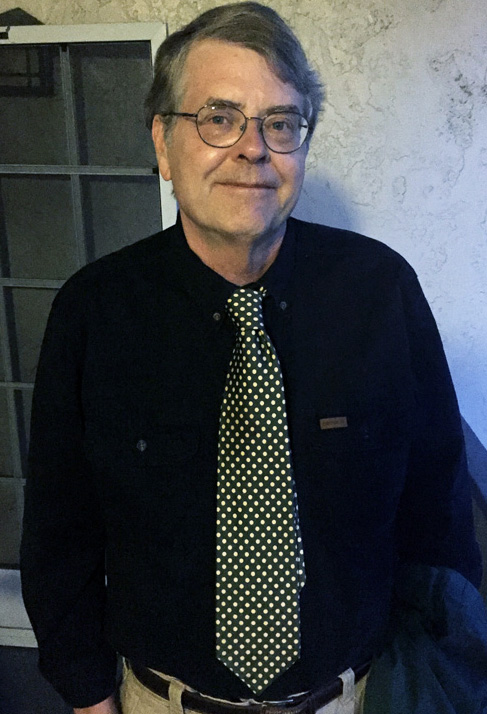
Gary Garvin lives in San Jose, California, where he writes and teaches English. His short stories and essays have appeared in Fourth Genre, Numéro Cinq, the minnesota review, New Novel Review, Confrontation, The New Review, The Santa Clara Review, The South Carolina Review, The Berkeley Graduate, and The Crescent Review. He is currently at work on a collection of essays and a novel.
.

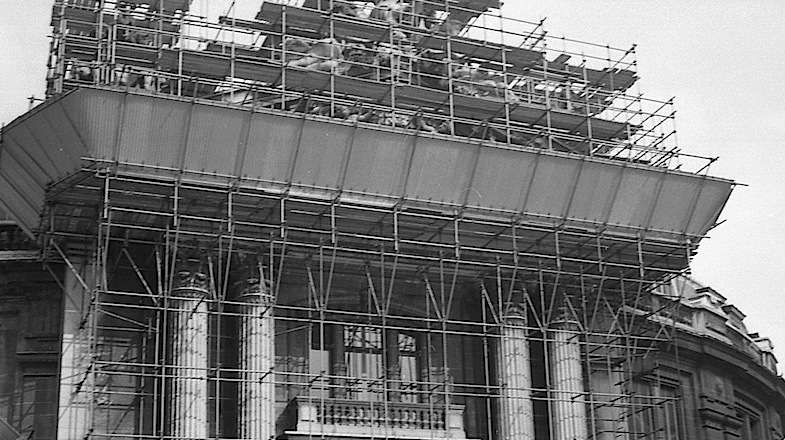

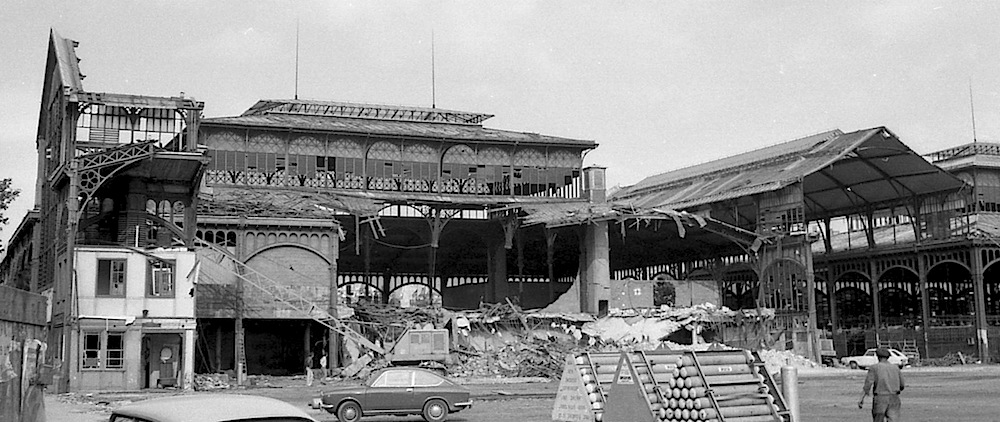
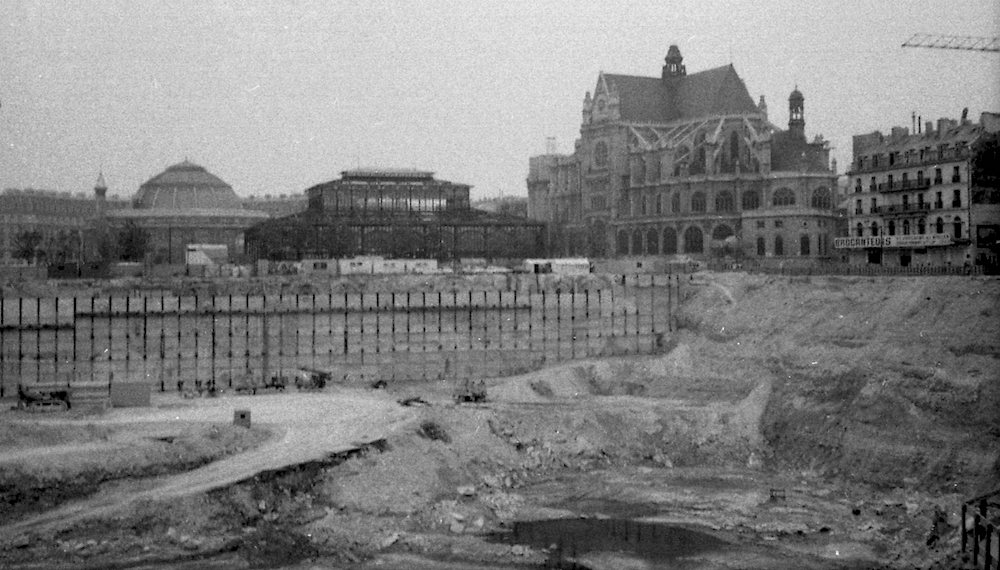


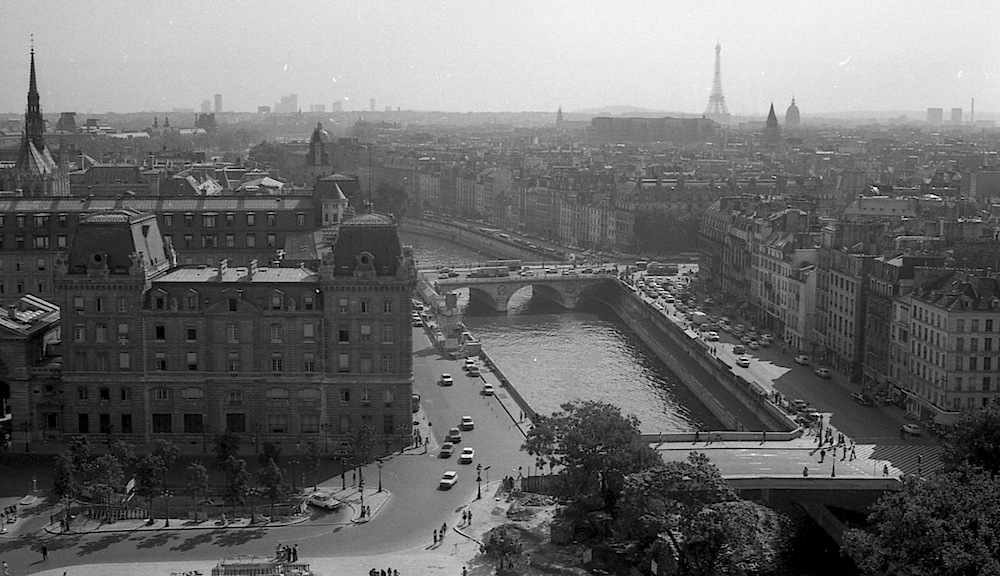

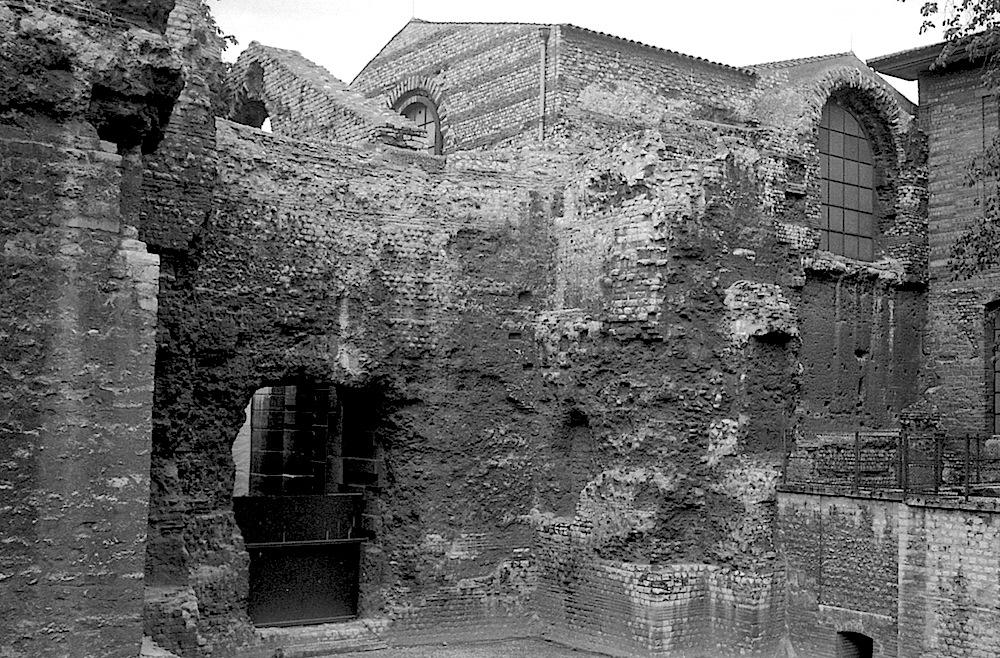

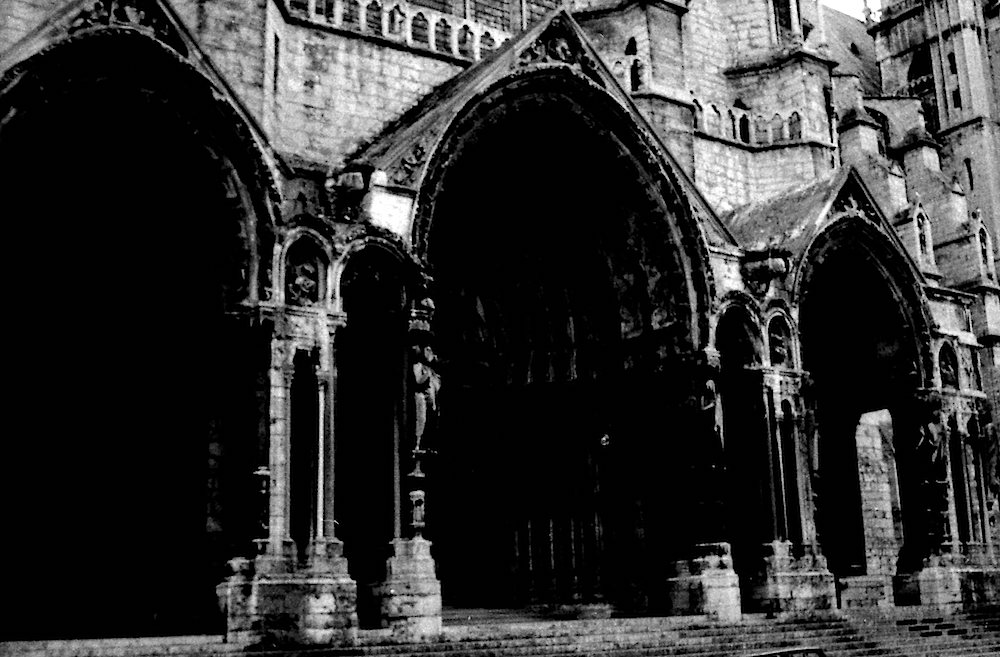
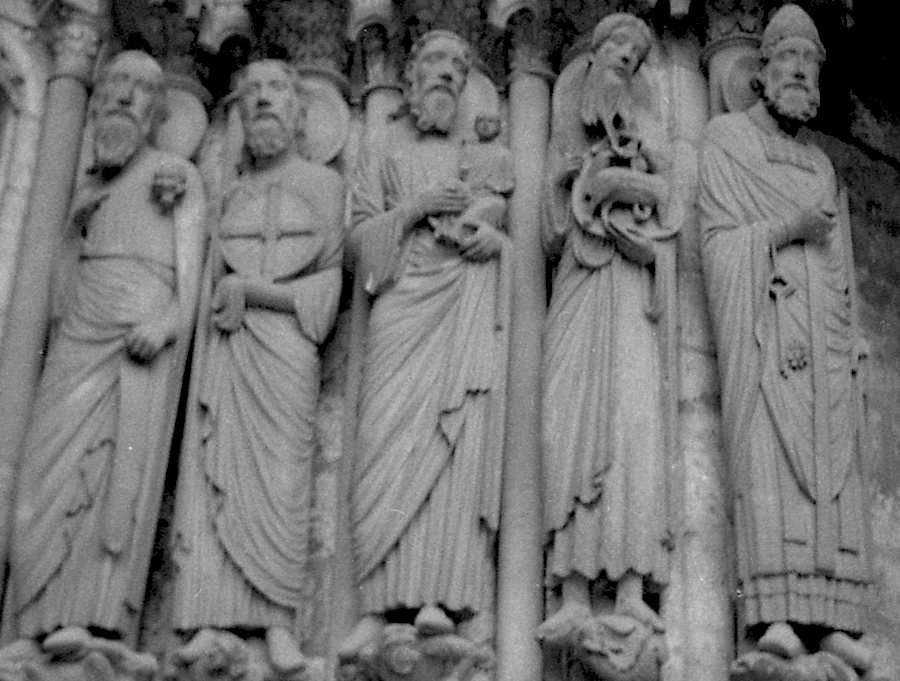



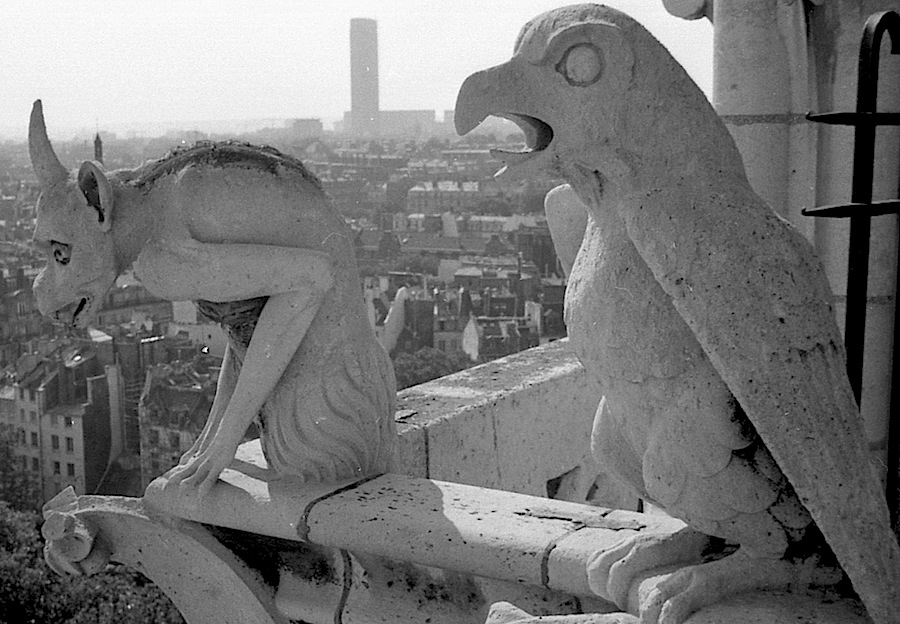
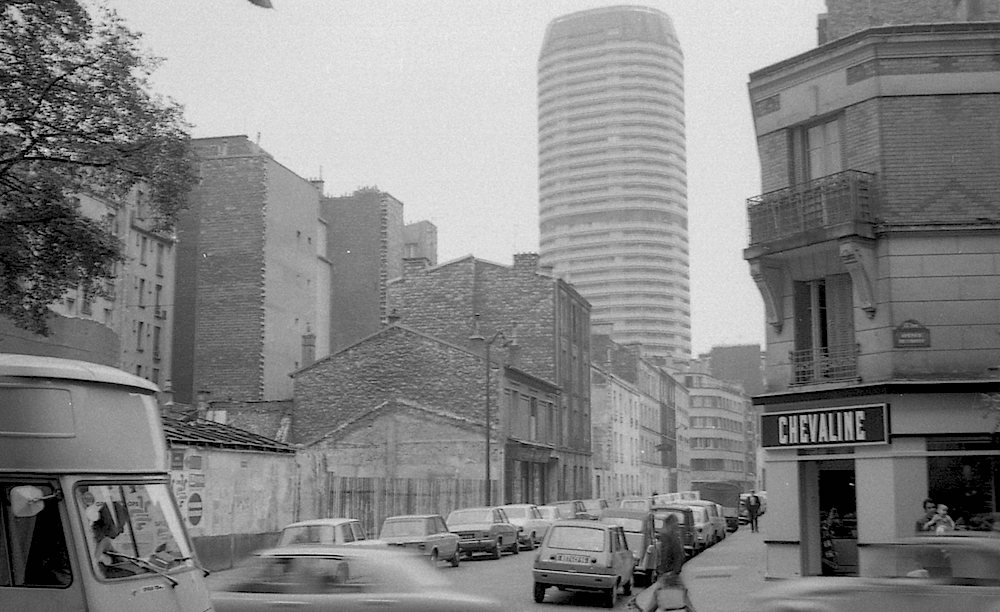
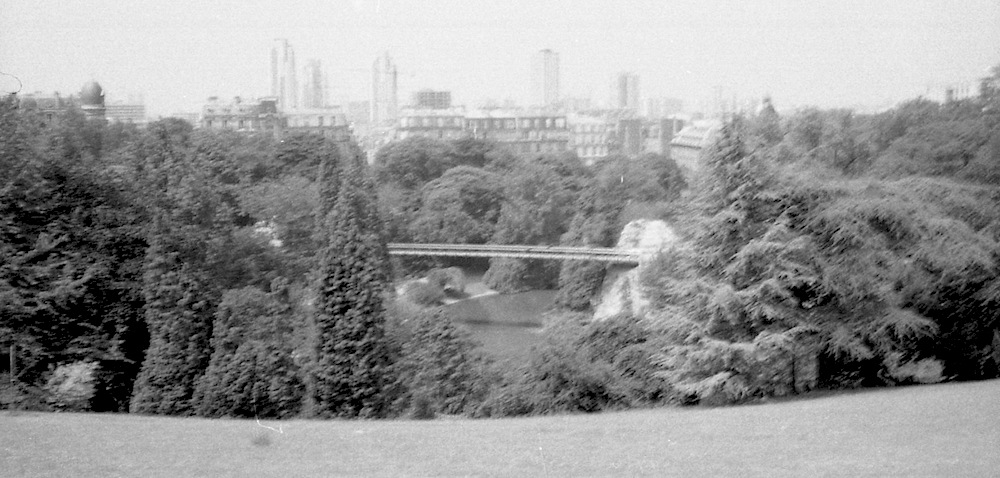
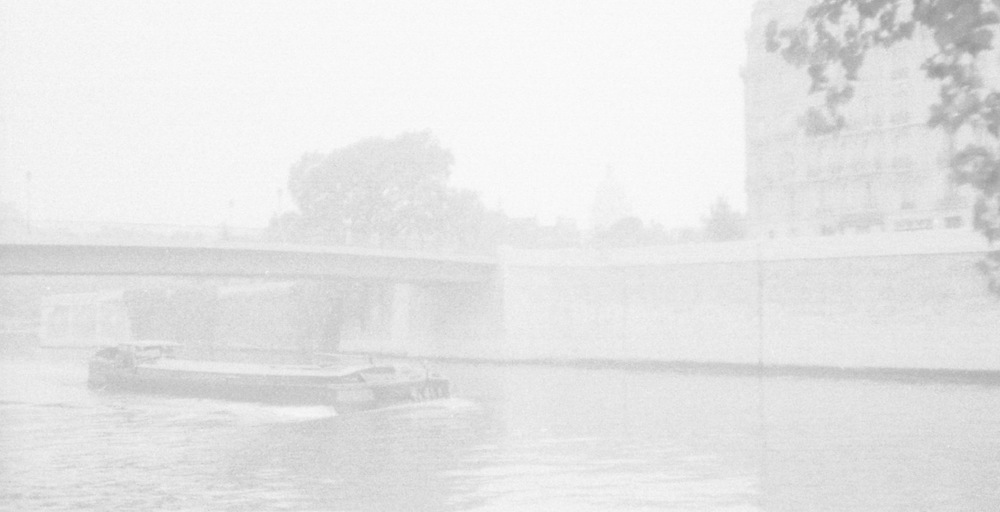

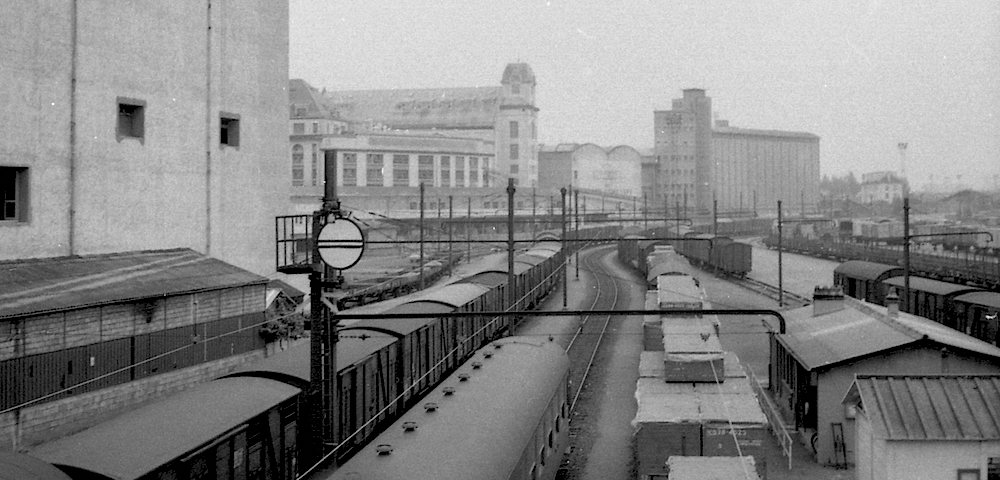
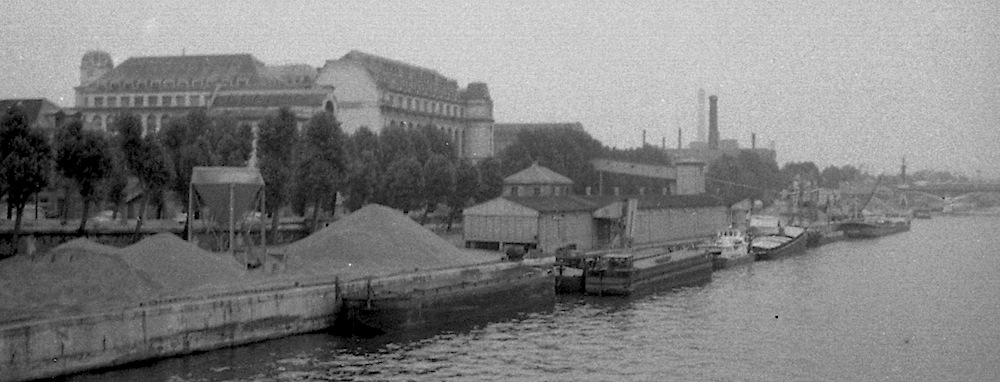

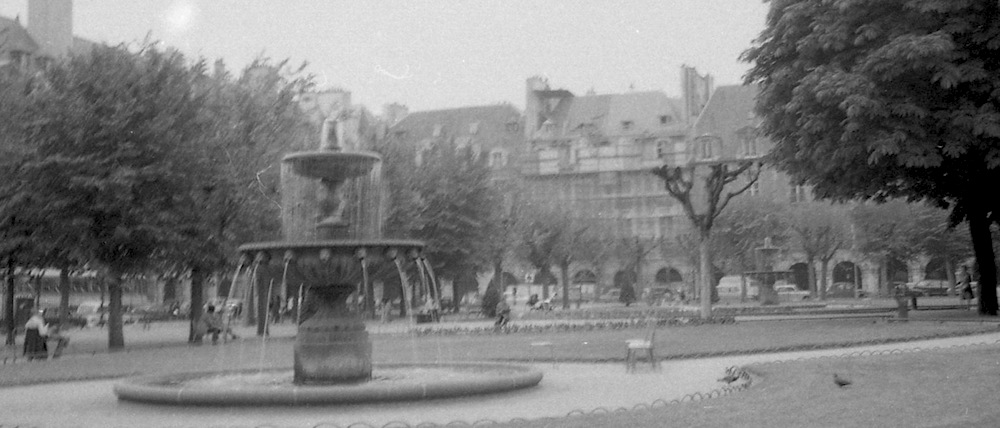
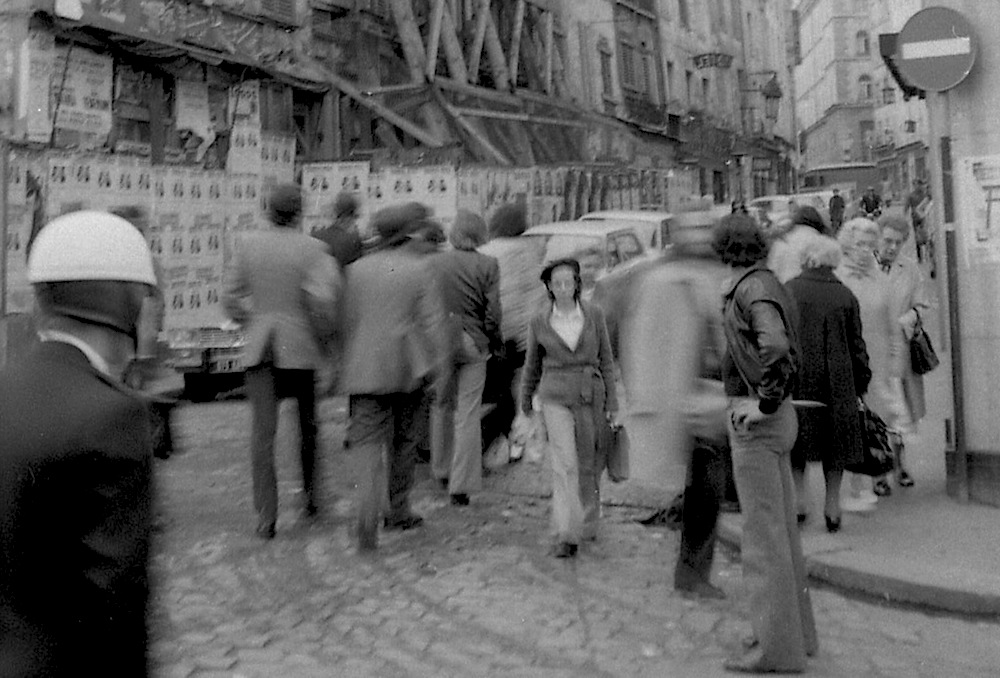
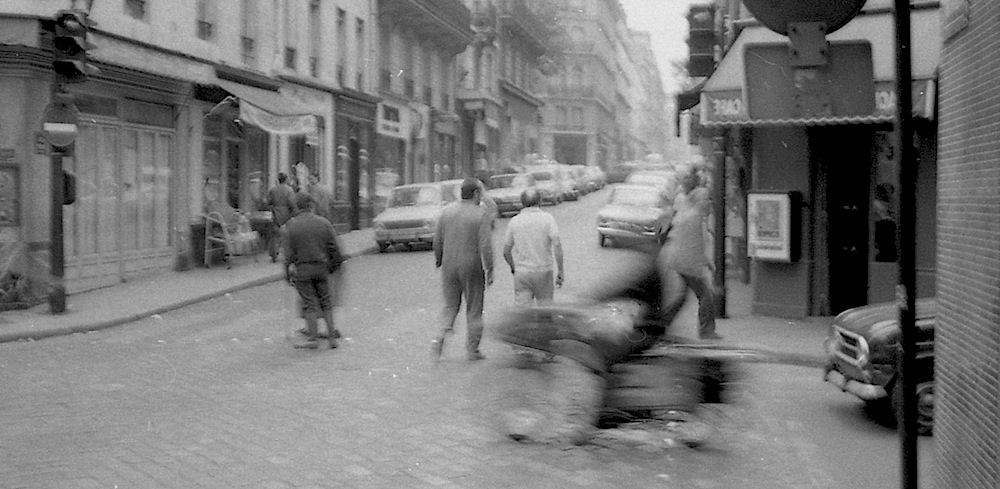


Thank you for this moving journey through space and time, with its gently swinging pendulum between private and public, rehearsal and spectacle, meaning and meaninglessness, chaos and order. It made me feel (with the sudden re-realization that great writing can) the miracle of sitting in a house in Vermont in 2015 of being transported–translated–into another much more immediately compelling world and time.
Thank you for this wonderful response, Genese. An essay should invite other essays—and can open up other backyards.
Really lovely, these truthful, imperfect photographs. Am in awe of how you did this exactly.. How the older you and the younger you are both present here. It has a very unusual effect. Wonderful.
Thanks so much, Meg. I can scarcely take credit for the photos—you read the text—but here they are. There may be a point in this discovery.
Gary, Your old and very real photos bring the romance, joy, and despair of Paris to life for me. Paris seems to reflect my mood at the time and enhance it. While I heard briefly David’s description of the effect of Paris on you as a young man, it is helpful too see some of what you saw and thought at the time. By the way, I am struck by your resemblance to David — fleeting, but there. I do recall after all these years that your voice made me jump at its similarity to David’s. Thank you for sharing…Peggy